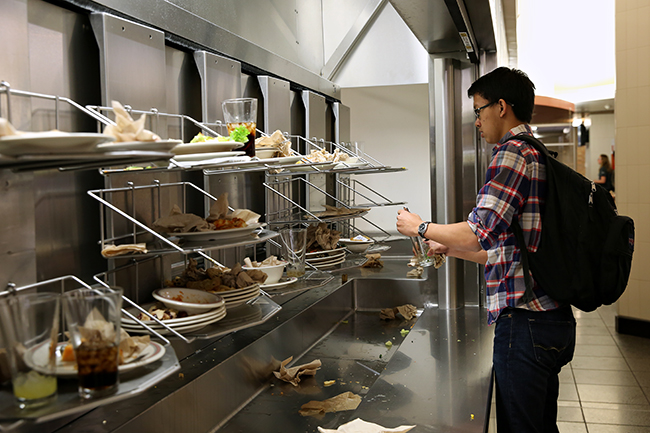The most recent annual projected plate waste accumulated from UT dining halls has gone down from 43.59 tons to a projected 35 tons since fall 2014, according to a study by the Division of Housing and Food Service.
The almost nine ton decrease in food waste comes from a larger plan to decrease waste on campus from a current 45 percent diversion rate to a 90 percent diversion rate by the year 2020, according to Hunter Mangrum, environmental specialist with DHFS. Diversion rate is the amount of solid waste and materials being collected and transported away from the landfills, such as recycling.
According to Mangrum, the average student wastes 12 ounces of food — the size of your typical can of Spam — every time they eat at the Kinsolving dining hall or J2. Mangrum said UT will attempt to decrease food waste and increase the diversion rate each year by making sure students who eat on campus are well-informed about how to dispose of food waste properly.
“Through behavior changes and creating awareness, people are wasting less food, which creates less waste, and thus, it is a diversion method in a different way,” Mangrum said.
One way DHFS has informed students and lowered plate waste is through the Clean Plate Club initiative that started in 2013, according to Mustafa Monk, geography senior and sustainability student assistant at DHFS.
Monk helps collect the data used to determine the amount of food being wasted in the dining halls on campus. In order to collect the data for the study conducted every semester, DHFS workers and nutrition students sort food waste put into the dining hall conveyor belts into three categories: liquid waste, solid waste and pizza crust, the latter which accounted for roughly 94 pounds of the total projected plate waste for spring 2015. Monk said at the end of the two-week collecting period, they use the data to determine their plan for campus advocacy.
“Food waste is an issue, and there are ways to sort of fight against the trend of wasting food,” Monk said. “Our most useful information is to actually think about the situation you are in. How hungry are you, and when you’re going into a dining area, be more mindful about your selection of food because you can always go back for seconds but not the other way around.”
Advocacy such as the Clean Plate Club initiative plays a large role in keeping down the food waste numbers, according to Rene Rodriguez, director of food services at DHFS.
“Because of all the things that we’ve done, the numbers have continuously decreased,” Rodriguez said. “We have been able to show that we are making a difference, but it’s not us — it’s the students. It’s just about getting in front of the students and making sure they know the impact one of their plates has — the students are doing it all.”





















